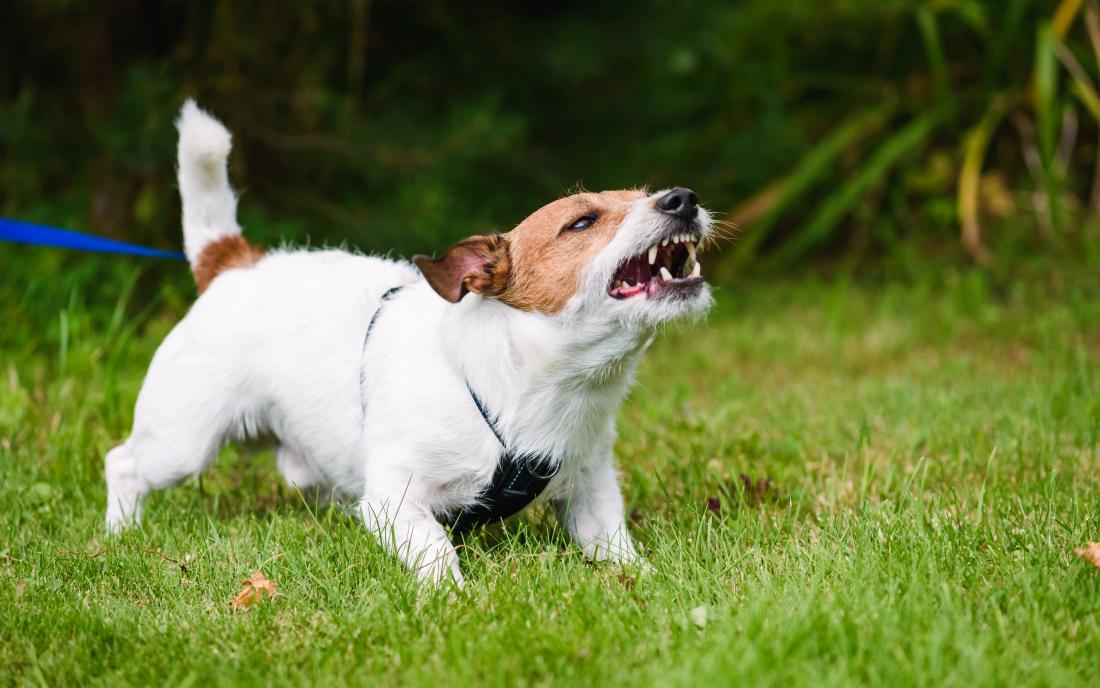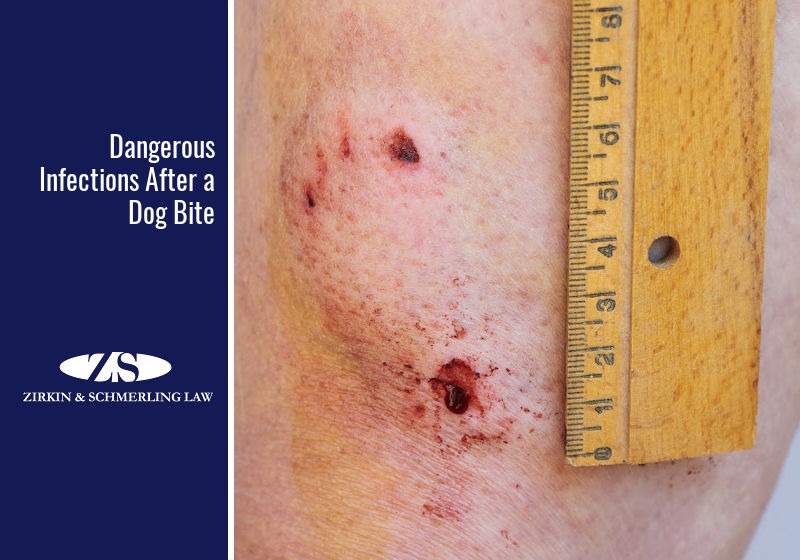To determine if a dog bite is infected, look for signs such as redness and swelling around the wound, warmth, and increasing pain. Pus or liquid leaking from the wound and difficulty moving the affected body part are also indications of infection.
Other symptoms may include enlarged lymph nodes and tenderness around the bite. It is important to monitor the bite closely and seek medical attention if these signs persist or worsen. Neglecting an infected dog bite can lead to serious complications, so prompt treatment is essential.

Credit: www.medicalnewstoday.com
Signs Of Infection From A Dog Bite
Signs of infection from a dog bite may include redness, swelling, tenderness, pain, pus, and difficulty moving the affected area. It is important to recognize these symptoms to determine if the bite is infected and seek appropriate medical treatment.
Physical Signs Of Infection
When it comes to determining if a dog bite is infected, there are several physical signs you should look out for. These signs usually manifest around the wound and can include:
- Redness and swelling: The area around the bite wound may become red and swollen.
- Warmth: The wound may feel warm to the touch due to the body’s immune response to the infection.
- Pain: Increasing pain around the bite wound can indicate the presence of infection.
- Liquid or pus: If you notice any liquid or pus oozing from the wound, it is a clear indication that the bite has become infected.
- Difficulty moving the affected body part: In some cases, an infected dog bite can lead to difficulty in moving the body part where the bite occurred.
- Enlarged lymph nodes: Swollen lymph nodes near the bite site can be a sign that the infection has spread.
Symptoms That Suggest The Wound Is Infected
Aside from the physical signs mentioned above, there are certain symptoms that may suggest the dog bite wound is infected. These symptoms include:
- Redness and swelling around the wound.
- The wound feels warm and increasingly painful.
- Liquid or pus leaks from the wound.
Signs Of Serious Infection Or Sepsis
In rare cases, a dog bite infection can progress to a more serious condition called sepsis. It is important to be aware of the signs of a serious infection or sepsis, which can include:
- Extreme pain or pain that worsens over time.
- Uncontrollable bleeding.
- Deep lacerations or puncture wounds.
- Broken bones or internal injuries.
- Loss of function or muscle weakness.
- Signs of infection including redness, red streaks, tenderness, warmth, pus, or oozing fluid from the wound.
If you notice any of these signs or symptoms after a dog bite, it is important to seek medical attention immediately. Prompt treatment can help prevent further complications and ensure a speedy recovery.
Treatment And Complications
If you’re worried about a dog bite becoming infected, look out for redness, swelling, warmth, and pus around the wound. Seek medical attention if these symptoms occur. Treatment for infected dog bites may include antibiotics and wound care to prevent complications.
Preventing Infection
Dog bites can easily become infected if not properly treated. To prevent infection, follow these simple steps:
- Wash the wound immediately with soap and clean running water for at least 5 minutes.
- Apply an antiseptic solution or ointment to the wound.
- Cover the wound with a sterile bandage or dressing to keep it clean.
- Monitor the wound for any signs of infection such as redness, swelling, or pus.
- Seek medical attention if the wound does not improve within 24-48 hours or if you develop any symptoms of infection.
Medical Treatment For Infected Dog Bites
If a dog bite becomes infected, it is important to seek medical treatment. The following medical interventions may be required:
- Antibiotics: Your doctor may prescribe antibiotics to help fight the infection. It is important to take the full course of antibiotics as prescribed, even if the symptoms improve.
- Tetanus shot: If your tetanus immunization status is not up to date, your doctor may recommend a tetanus shot to prevent tetanus infection.
- Wound cleaning and dressing: In some cases, your doctor may need to clean the wound and apply a sterile dressing to promote healing.
- Monitoring: Your doctor will closely monitor the progress of the infection and may recommend follow-up visits to ensure proper healing.
Potential Complications Of Infected Dog Bites
Infected dog bites can lead to various complications if not treated promptly. Some potential complications include:
- Cellulitis: If the infection spreads beyond the wound, it can cause cellulitis, a bacterial skin infection characterized by redness, warmth, and tenderness.
- Abscess formation: Pus may accumulate in a localized pocket, leading to an abscess. This can cause increased pain and swelling at the site of the bite.
- Septicemia: In rare cases, the infection can spread to the bloodstream, resulting in a serious condition called septicemia. Symptoms of septicemia include fever, chills, confusion, rapid breathing, and fatigue.
- Osteomyelitis: If the infection reaches the bones, it can cause osteomyelitis, a bone infection that may require surgical intervention.
- Rabies: If the dog that bit you is suspected to have rabies, immediate medical attention is necessary. Rabies is a life-threatening viral infection that affects the central nervous system.
Specific Infections From Dog Bites
If you suspect a dog bite may be infected, look for signs such as redness, swelling, warmth, pus, and increasing pain around the bite wound. Additionally, if you experience difficulty moving the body part or notice enlarged lymph nodes, it may indicate an infection.
Seek medical attention if necessary.
Capnocytophaga Infection
Dog bites can sometimes lead to a specific type of infection called Capnocytophaga. This infection is caused by Capnocytophaga bacteria that are commonly found in the mouths of dogs and cats. While most healthy individuals don’t experience any complications from these bacteria, people with weakened immune systems or certain medical conditions are at a higher risk of developing a Capnocytophaga infection.
Signs and symptoms of a Capnocytophaga infection can include:
- Blisters around the bite wound
- Redness and swelling at the site of the bite
- Pus or drainage from the wound
- Pain or tenderness
If you notice any of these symptoms after a dog bite, it’s important to seek medical attention as soon as possible. Prompt treatment with antibiotics can help prevent the infection from worsening and spreading.
Rabies Infection
Rabies is a viral infection that can be transmitted to humans through a dog bite. This infection is caused by the Rabies virus, which affects the central nervous system and can be fatal if left untreated. Rabies is a serious concern when it comes to dog bites, especially if the dog is not vaccinated against the disease.
Signs and symptoms of a rabies infection may include:
- Flu-like symptoms such as fever, headache, and fatigue
- Agitation and confusion
- Difficulty swallowing
- Excessive salivation
- Paralysis
If you suspect that a dog bite may have exposed you to rabies, it’s crucial to seek immediate medical attention. Treatment for rabies typically involves a series of vaccinations to prevent the virus from infecting the central nervous system.
Cellulitis Infection
Cellulitis is a bacterial skin infection that can occur as a result of a dog bite. This infection occurs when bacteria enter the deeper layers of the skin through an open wound.
Signs and symptoms of cellulitis may include:
- Redness and warmth around the bite wound
- Swelling
- Tenderness or pain
- Fever
It’s important to seek medical attention if you suspect a cellulitis infection after a dog bite. Antibiotics are typically prescribed to treat the infection and prevent it from spreading further.

Credit: www.zirkinandschmerlinglaw.com

Credit: www.avidlawfirm.com
Frequently Asked Questions On How To Tell If A Dog Bite Is Infected
What Does An Infection From A Dog Bite Look Like?
Signs of an infection from a dog bite include redness and swelling around the wound, warm and increasingly painful feeling, leakage of liquid or pus, and difficulty moving the affected body part.
How Long After A Dog Bite Does Infection Set In?
An infection from a dog bite can set in within a few hours to several days. Signs of infection include redness, swelling, warmth, pain, pus, and difficulty moving the affected area. If you suspect an infection, seek medical treatment promptly.
How Do I Know If A Dog Bite Is Serious?
Signs of a serious dog bite include extreme pain, uncontrollable bleeding, deep wounds, broken bones, loss of function, and signs of infection such as redness, swelling, pus, or oozing fluid from the wound. Seek medical attention if you experience these symptoms.
How Do You Know If You Have Sepsis From A Dog Bite?
Signs of sepsis from a dog bite include confusion, rapid breathing, fever or low body temperature, fatigue, and chills. Seek medical attention if you experience these symptoms. Other signs of infection from a dog bite include redness, swelling, pain, pus, and difficulty moving the affected area.
Conclusion
Recognizing the signs of an infected dog bite is crucial for prompt treatment and proper healing. Look for symptoms such as redness, swelling, warmth, and pain around the wound, as well as the presence of pus or liquid drainage. If any of these signs are present, seeking medical attention is important to prevent further complications.
Remember to closely monitor the wound and follow your healthcare provider’s instructions for proper care and treatment. By being aware of the signs of infection and taking appropriate action, you can ensure a safe recovery from a dog bite.


